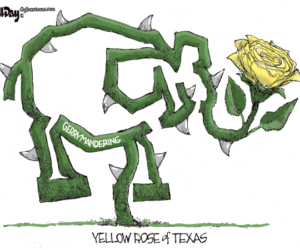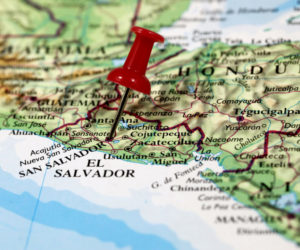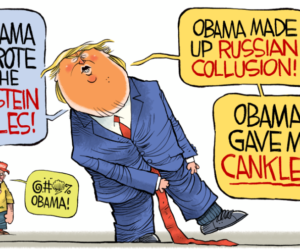
Scott Olson/Getty Images
The gerrymandering drama in Texas – and beyond – has continued to unfold after Democratic state legislators fled the state. The Democrats want to prevent the Republican-controlled government from enacting a mid-decade gerrymander aimed at giving Republicans several more seats in Congress.
The Texas GOP move was pushed by President Donald Trump, who’s aiming to ensure he has a GOP-controlled Congress to work with after the 2026 midterm elections.
Other Republican states such as Missouri and Ohio may also follow the Texas playbook; and Democratic states such as California and Illinois seem open to responding in kind.
But there are a few factors that make this process more complicated than just grabbing a few House seats. They may even make Republicans regret their hardball gerrymandering tactics, if the party ends up with districts that political scientists like me call “dummymandered.”
Democrats can finally fight back
Unlike at the federal level, where Democrats are almost completely shut out of power, Republicans are already facing potentially consequential retaliation for their gerrymandering attempts from Democratic leaders in other states.
Democrats in California, led by Gov. Gavin Newsom, are pushing for a special election later this year, in which the voters could vote on new congressional maps in that state, aiming to balance out Democrats’ losses in Texas. If successful, these changes would take effect prior to next year’s midterm elections.
Other large Democratic-controlled states, such as Illinois and New York – led by Gov. J.B. Pritzker and Gov. Kathy Hochul, respectively – have also indicated openness to enacting their own new gerrymanders to pick up seats on the Democratic side.
New York and California both currently use nonpartisan redistricting commissions to draw their boundaries. But Hochul recently said she is “sick and tired of being pushed around” while other states refuse to adopt redistricting reforms and gerrymander to their full advantage. Hochul said she’d even be open to amending the state constitution to eliminate the nonpartisan redistricting commission.
It’s unclear whether these blue states will be successful in their efforts to fight fire with fire; but in the meantime, governors like Hochul and Pritzker have welcomed the protesting Democratic legislators from Texas, in many cases arranging for their housing during their self-imposed exile.
Dummymandering
Another possible problem for either party looking to gain some seats in this process stems from greediness.
In responding to Democrats’ continued absence from Texas, Gov. Greg Abbott threatened even more drastic gerrymanders. “If they don’t start showing up, I may start expanding,” Abbott said. “We may make it six or seven or eight new seats we’re going to be adding on the Republican side.”
But Abbott might think twice about this strategy.
Parties that gerrymander their states’ districts are drawing lines to maximize their own advantage, either in state legislatures or, in this case, congressional delegations.
When parties gerrymander districts, they don’t usually try to make them all as lopsided as possible for their own side. Instead, they try to make as many districts as possible that they are likely to win. They do this by spreading groups of supportive voters across several districts so they can help the party win more of these districts.
But sometimes the effort backfires: In trying to maximize their seats, a party spreads its voters too thin and fails to make some districts safe enough. These vulnerable districts can then flip to the other party in future elections, and the opposing party ends up winning more seats than expected.
This phenomenon, commonly referred to as “dummymandering,” has happened before. It even happened in Texas, where Republicans lost a large handful of poorly drawn state legislative districts in the Dallas suburbs in 2018, a strong year for Democrats nationwide.
With Democrats poised for a strong 2026 midterm election against an unpopular president, this is a lesson Republicans might need to pay attention to.
There’s not much left to gerrymander
One of the main reasons dummymandering happens is that there has been so much gerrymandering that there are few remaining districts competitive enough for a controlling party to pick off for themselves. This important development has unfolded for two big reasons.
First, in terms of gerrymandering, the low-hanging fruit is already picked over. States controlled by either Democrats or Republicans have already undertaken pretty egregious gerrymanders during previous regular redistricting processes, particularly following the 2010 and 2020 censuses.
Republicans have generally been more adept at the process, particularly in maximizing their seat shares in relatively competitive states such as Wisconsin and North Carolina that they happen to control.
But Democrats have also been successful in states such as Maryland, where only one Republican serves out of nine seats, despite the party winning 35% of the presidential vote in 2024. In Massachusetts, where Democrats hold all eight seats, Republicans won 37% of the presidential vote in 2024.
There’s also the fact that over the past half-century, “gerrymanderable” territory has become more difficult to find regardless of how you draw the boundaries. That’s because the voting electorate is more geographically sorted between the parties.
This means that Democratic and Republican voters are segregated from each other geographically, with Democrats tending toward big cities and suburbs, and Republicans occupying rural areas.
As a result, it’s become less geographically possible than ever to draw reasonable-looking districts that split up the other party’s voters in order to diminish the opponents’ ability to elect one of their own.
Regardless of how far either party is willing to go, today’s clash over Texas redistricting represents largely uncharted territory. Mid-decade redistricting does sometimes happen, either at the hands of legislatures or the courts, but not usually in such a brazen fashion.
And this time, the Texas attempt could spark chaos and a race to the bottom, where every state picks up the challenge and tries to rewrite their electoral maps – not in the usual once-a-decade manner, but whenever they’re unsatisfied with the odds in the next election.![]()
Charlie Hunt, Associate Professor of Political Science, Boise State University
This article is republished from The Conversation under a Creative Commons license. Read the original article.
















